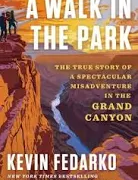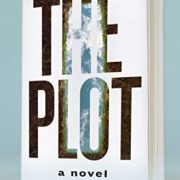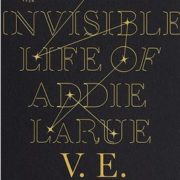Creation Lake by Rachel Kushner
It’s little wonder that Rachel Kushner’s Creation Lake made it onto numerous “Best Books of 2024” lists. Through the voice of Sadie Smith, a mercenary spy, we’re told of her infiltration into a farming commune in southwestern France. As with Sadie’s real name, her employer is unknown. But it’s clear that clandestine corporate interests view this commune as a major threat to large-scale agribusiness expansions. Regardless, it’s not the spy craft that elevated this novel to critical acclaim. It’s the uniqueness and depth of Kushner’s writing. Kushner primarily delves into two characters, taking us inward and—at times—back tens of thousands of years.
We know this much about Sadie: she’s 34, a Berkeley PhD dropout in rhetoric, and a former (fired) FBI agent. She’s also quite the user of people. To be fair, a spy is a user by trade. But it feels different with Sadie. It’s as though she disdains the subjects she manipulates simply because they are so easily manipulated. Sadie feels little remorse, for she believes most people are poseurs of some sort when they adopt their own respective identities. “People can sometimes pretend so thoroughly that they forget they are pretending. At which point, it could even be said that they are no longer pretending.” In this instance, the group Sadie pretends to join is known as the Moulinards.
Sadie’s contacts point her to a Parisian (Lucien) who is old friends with an influential commune leader. Within a matter of months, Sadie and Lucien are living together, moving her closer to the commune. It’s yet another easy exploitation, for she already knew Lucien “believed he deserved to fall in love.” At the same time, she accesses the email account of the Moulinards’ spiritual leader, Bruno Lacombe.
For a cult to exist, it must orbit an individual who alone possesses “the truth.” As with many cult leaders, Bruno rejects civilization, known among the activist communities as an “anti-civver.” Bruno in fact doesn’t even live with the Moulinards. He spends most of his time in a cave, worshiping a failed species: the Neanderthals, or Thals, as Bruno calls them. Ostensibly, Bruno steps out of the dark long enough to occasionally use his daughter’s computer, sending missives to the group on what he’s gleaned down in the deep.
Bruno laments the world that was lost when the Neanderthals went extinct. Because we know—and live—how the human drama is playing out, the Neanderthal world is a tabula rasa for Bruno, and for anyone who wants to cleanse their mind of commodified images. This deprogramming takes place underground, by the “modalities and visions that darkness” promises.
Sound ridiculous? Of course. It’s ready-made to mock. But does Kushner give it depth nevertheless? That she does.
As Sadie winds her way closer to the Moulinards, Kushner not only returns to Bruno’s disquisitions, but to the life traumas that sent him into darkness. After surreptitiously reading Bruno’s emails, Sadie questions whether the commune’s inhabitants actually understand and deserve Bruno’s insights. Such questions are not part of Sadie’s mission, of course. But, then again, you don’t have to be a spy yourself to see that she’s at risk of losing control.
Still, Sadie performs her role well, eliminating potential threats to her mission by offering preemptive threats, as she does to an older French man who questions her identity. Her return threat leaves him looking “dejected and childish, like I had just taken something that belonged to him, and broken it, and handed it back.” However, when traveling by high-speed train through the countryside and becoming startled by the sudden appearance of another high-speed train traveling from the opposite direction, we know it means more than Sadie being startled. A reckoning is afoot.
One early morning, Sadie looks outside and says, “For all its fame, rosy-finger dawn leaves no prints.” We can substitute “Sadie” for “dawn” in that sentence. With Sadie, how long can she keep these disappearing acts up?
There’s piercing intelligence in Kushner’s writing. It’s not just her crackling writing style, where a hill left devoid of trees via logging looks “like the scalp of someone with an autoimmune condition.” Kushner writes Sadie as a scary smart individual who knows there are always sectarians among radicals, where a division can be made that will kill the whole.
It’s clear to Sadie that the existence of a charismatic leader speaks more to what the followers need to believe than what the leader is saying. Taken further, it’s why people are so credulous of the fantastical. Cryptozoology endures because people want to believe that there’s evidence of the unexplained. Why are there still Bigfoot sightings? It’s because people want to believe in Bigfoot. Even Bruno concedes as much.
The questions Bruno elicits within Sadie are more complicated. To be sure, Bruno’s theories at least point to a fossil record. After that, it’s a whole lot of conjecture. But, in the end, we’re not really talking about Neanderthals. To Sadie, it’s like waking up in the middle of the night and confronting your true self. “When people face themselves, alone, the passions they have been busy performing all day, and that they rely on to reassure themselves that they are who they claim to be, to reassure their milieu of the same, those things fall away.” It’s “the four a.m. reality of being.”
It’s fitting that Bruno exists only to Sadie through his writing and that he doesn’t even know of her existence. When orchestrated events arrive and things become tense with the Moulinards, Sadie—detaching, as always—says to herself, “You people are not real to me. No one is.” This could have been just as easily said by Bruno. In many ways, it’s time for Sadie to step into her own metaphorical cave.
Review by Jason Sullivan











